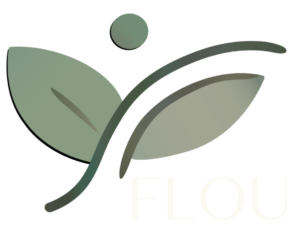We help children with:
Emotional Regulation & Co-Regulation
Infant & Child Development Screening
Sensory Processing Assessment & Support
Printing & Fine Motor Development
School Readiness & Support for Success
Gross Motor Development
Executive Functioning Skills
Stress Management & Relaxation
Services:
Assessment
60 minutes
Find out what your child’s strengths and needs are through a range of assessments.
Areas of assessment may include parent interview, fine motor and gross motor, play, sensory processing, visual perceptual and self-care.
Written summary available on request.
Therapy Session
60 minutes
Discover the perfect blend of fun and effectiveness in every therapy session at our space!
This session includes 45 minutes 1:1 therapy and 15 minutes parent coaching.
Exam Accommodation Report
If your child is struggling with handwriting during national exams or has difficulty using science experiment apparatus for practical exams, you may consider applying for exam accommodations.
We offer occupational therapy assessments and provide a detailed formal report to the school to apply for the accommodation.
General Consultation
30 minutes
Do you have a question about your child’s skills in the domains of:
Fine motor & Gross motor skills and coordination, Emotional regulation, Self-Care , Sensory Processing, Attention & Engagement?
Includes an email follow-up to review and give information on next step.
(*Workshop & training available too)
The Flou Approach
At Flou, we integrate the proven benefits of occupational therapy with calming and grounding yoga techniques to provide a holistic approach that helps your child build resilience, balance, and emotional well-being.
In our fast-paced urban environment, children often experience stress and overstimulation from school, activities, social interactions, and sensory overload from external stimuli such as screens, loud noises and crowded spaces.
These factors often leave children overwhelmed, leading to emotional meltdowns and difficulty regulating their emotions. Yoga-based techniques, including deep breathing exercises and yoga poses, complement OT’s sensory integration practices by teaching children how to calm their body and mind during challenging situations like these. These essential skills are useful and applicable at home, in school, or during transitions.
Likewise, despite participating in physical activities like swimming or gymnastics, some children may still struggle with balance and body awareness. Yoga poses like “tree pose” or “downward dog” can help build strength and coordination in a fun and interactive way, making these activities even more enjoyable and successful.
Drawing from the best of OT and yoga, The Flou approach addresses root causes and thoughtfully tailors each session to meet your child’s unique needs. Flou is not only committed to helping your children reach developmental milestones, but also equip them with lifelong skills to confidently thrive in today’s fast-paced world.
Why OT + Yoga?
Yoga-based / Yoga-integrated OT doesn’t replace traditional therapy, it makes it better by provide an engaging, multisensory approach to addressing sensory processing challenges and enhancing motor planning abilities.
By incorporating poses, breathing exercises, and structured movement, children gain the tools they need to navigate their sensory world and improve coordination, strength, and overall motor performance. This holistic approach builds foundational skills, while fostering confidence and independence.
Key benefits:
Enhances Sensory Integration
Yoga naturally involves multiple sensory systems, helping children process and respond to sensory input in a controlled, structured way:
- Proprioceptive Input: Yoga poses like “downward dog” or “child’s pose” provide deep pressure and joint compression, which calm the nervous system and improve body awareness.
- Vestibular Input: Dynamic poses such as “cat-cow” or “tree pose” engage balance and coordination, helping children regulate their sense of movement and equilibrium.
- Tactile Input: Touching the floor or a mat during poses provides calming tactile stimulation, reducing sensory sensitivities or aversions.
By engaging these systems, yoga helps children better integrate sensory input, reducing overstimulation or under-responsiveness.
Promotes self-regulation through sensory modulation
Yoga teaches children how to regulate their sensory experiences through mindful breathing and movement:
- Calming Techniques: Breathing exercises like “belly breathing” or “ocean breath” can reduce arousal levels, helping children feel grounded and calm.
- Alerting Techniques: Dynamic yoga flows or poses encourage movement and alert the body, helping children who are sluggish or disengaged become more focused.
Yoga offers tools for sensory modulation, enabling children to adjust their arousal levels in real-world situations.
Improves motor planning (Praxis)
Motor planning, or the ability to conceptualize, sequence, and execute movements, is a key area of development in yoga-based interventions:
- Sequencing Movements: Yoga routines require children to follow multi-step instructions (e.g., transitioning from “mountain pose” to “forward fold”), which strengthens their ability to plan and sequence movements.
- Crossing the Midline: Poses like “extended triangle” or “seated twist” engage both sides of the body, improving bilateral coordination and integration.
- Body Awareness: Yoga enhances proprioception, helping children understand where their body is in space, which is essential for effective motor planning.
Repeating yoga sequences in a structured, engaging way helps children develop better praxis and spatial awareness.
Builds core strength and stability
Yoga poses inherently focus on core engagement, which is foundational for motor planning:
- Static Poses: Poses like “plank” or “warrior” build core strength and stability, helping children maintain posture and balance during motor tasks.
- Dynamic Movements: Flow sequences challenge coordination and timing, building motor precision and control.
Improved core strength supports gross and fine motor skills, enhancing performance in daily activities like sitting, writing, or playing sports.
Creates safe, predictable environment for learning
Yoga provides a calming, structured environment where children can explore movement and sensory experiences. Repeating familiar yoga poses and sequences helps children feel secure, reducing anxiety and allowing them to focus on refining their sensory and motor skills.
A consistent, positive environment enhances learning and retention of new motor plans.
Know a child who could benefit from FLOU’s services?
Whether you’re a healthcare professional, educator, parent, friend, or simply someone who cares, you can refer them to our expert-led services by:
- Filling out the referral form below, or
- Booking an appointment on their behalf here
